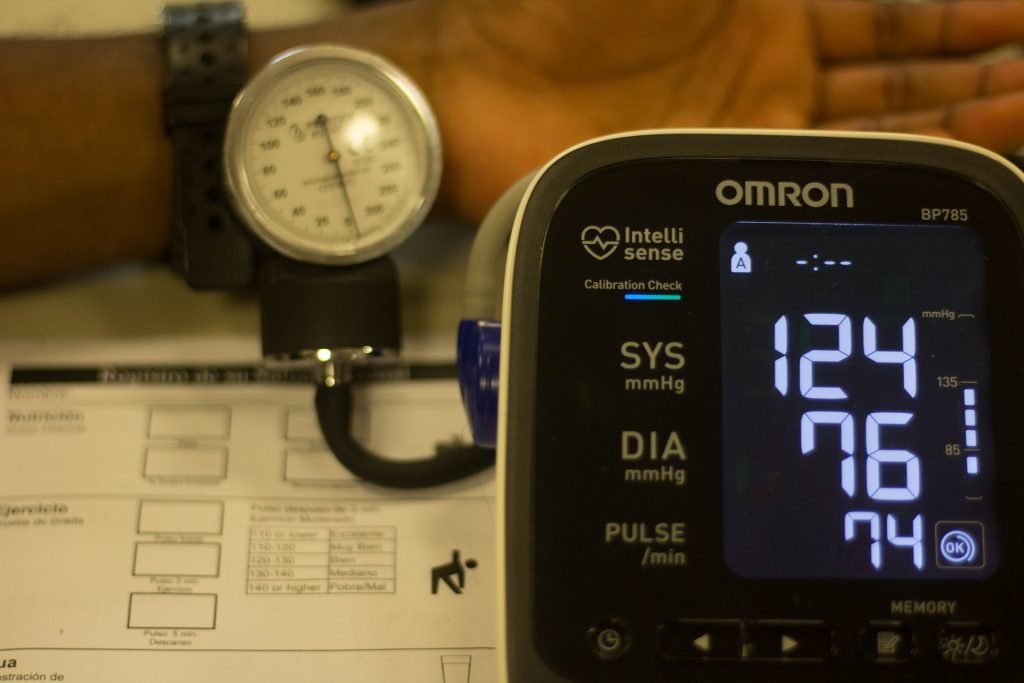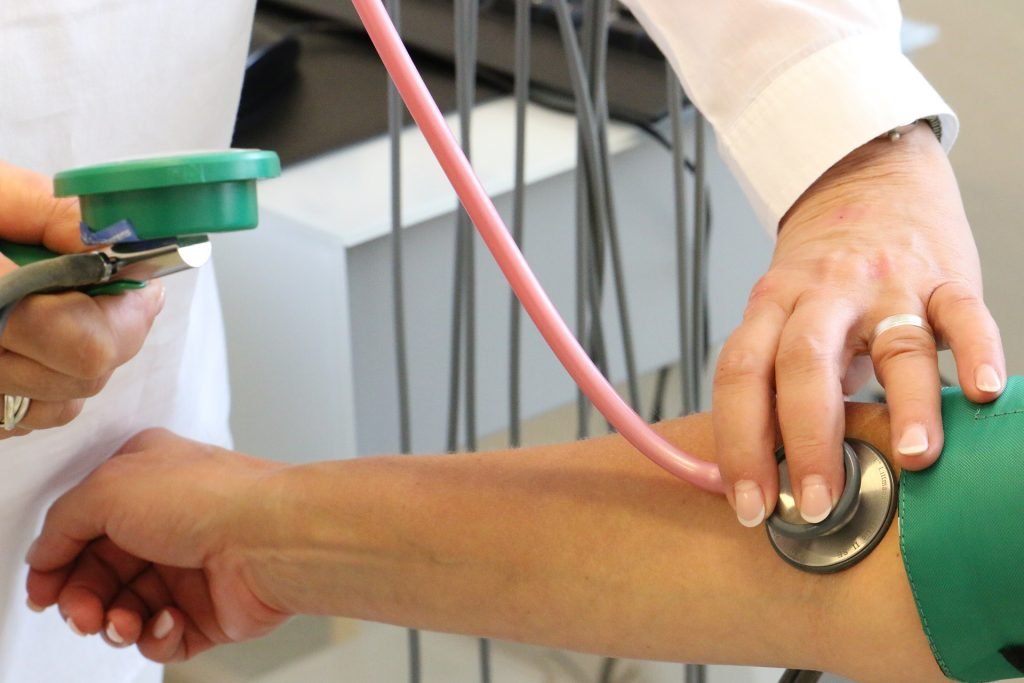Blood pressure is the number that reflects the pressure that blood puts on the arteries of the body. The heart exerts pressure on the arteries by pumping blood loaded with oxygen and nutrients to the various tissues of the body, from the left part of the heart. Blood pressure reaches its peak when the heart muscle contracts at the moment when the heart pumps blood. That is known as systolic blood pressure.

When the heart muscle flattens blood pressure reaches its lowest levels. This is known as diastolic blood pressure. Between the two operations, the heart relaxes, rests, and gets ready to be filled with blood again.
From what we have mentioned above, we conclude that pressure is very important for the delivery of oxygen and nutrients to various parts of the body. Also, blood pressure is necessary for transporting some hormones such as insulin, white blood cells, and antibodies that are important for the immunity system.
On the other hand, when blood reaches the cells, it nourishes them with oxygen and nutrients and captures carbon dioxide and other compounds resulting from metabolic processes, including toxins excreted by the body through the liver and kidneys.
Blood pressure is one of the important vital indicators of human life. As we have stated previously, blood pressure is responsible for the delivery of oxygen and nutrients from the arteries through the circulatory system to the various tissues and organs of the body.
As for blood pressure readings, we consider the results normal if the systolic blood pressure is between 90 and 120 mm Hg, and the diastolic blood pressure is between 60 and 80 mm Hg.
High blood pressure is a condition in which blood pressure remains high for a long time in a way that exposes the patient to other health problems such as heart diseases if the pressure is not controlled properly.
The blood pressure is said to be high if the result of the measurement is 80/130 mm Hg or more. Unfortunately, pressure may stay high for several years without being noticed by a person.
This disease, usually, is not accompanied by symptoms. But it is easy to diagnose it through periodic visits to the doctor. Plus, we should mention that it is very important to adhere to the instructions of the specialist and the plan he puts in place to control high pressure, and, therefore, avoid any possible complications such as clots.
In addition, one should distinguish between two types of hypertension: primary and secondary
This is the most common type of hypertension. It usually develops over the years, and the more a person grows older, the more likely he is to get the disease.

It results from taking a particular medication or developing a disease or a health problem. To restore normal pressure of blood, one should stop using the medication and treat the disease that has caused hypertension.
Hypotension is a condition in which the pressure is lower than normal or lower than expected, taking into account the surrounding environmental factors. Health specialists say that blood pressure is considered low if it is below 60/90 mm Hg. But it is considered very normal if it does not have symptoms or signs and does not cause problems for the person concerned.
Low blood pressure accompanied by symptoms requires a doctor’s visit to obtain appropriate treatment. Symptoms that may accompany low pressure are a feeling of heaviness in the head, tiredness, weakness and confusion, blurred vision, nausea, pain in the neck and back as well as palpitations.
Hypotension can be temporary or chronic. In fact, there are various types of low pressure, some of which are common in certain groups of people. Below are the most important ones of these types are detailed.
People with Orthostatic hypotension feel dizzy or may faint when they suddenly change their positions, such as standing. People who mostly suffer from hypotension are pregnant women and the elderly.
Patients with Postprandial hypotension feel dizzy or faint after eating because of a sudden drop in pressure. Again, the elderly are the ones who suffer from this disease.
People with Neurally mediated hypotension feel dizziness and nausea and may faint after exercising or standing for an extended period of time.
Periodic measurement of the pressure of the blood is the only way that helps diagnose this disease at an early stage. In fact, high blood pressure does not have any symptoms or signs that enable people to know that they are infected.
We can measure the pressure of the blood at the doctor, in the pharmacy, or at home. Also, there is a number of medical devices that we can usually use to measure blood pressure manually such as a stethoscope. This is an inflatable rubber bracelet with a squeezable balloon and pressure monitor.
For example, a health professional wraps the rubber bracelet around the patient’s arm and presses the squeezable balloon until the bracelet inflates. Then, it empties the air from the bracelet. While doing so, he listens to the heartbeat using the stethoscope and observes the results of the measurement displayed on the screen for the first time. This is known as systolic blood pressure.
He continues listening to the heartbeat and observes the change in the results until the heartbeat stops. This is known as diastolic blood pressure.
Other professionals may measure blood pressure using digital or mechanical pressure devices with which dispense the stethoscope. These devices are more accurate and easy to use. But the methods of operating them may vary from one device to another. So one must follow the operation instructions to guarantee correct use and correct results.
If the pressure is within the normal limits, this is good. But we should take the necessary measures to help maintain it within its normal range.
Here are some tips to follow so as to keep the pressure within normal limits.
Leave a comment